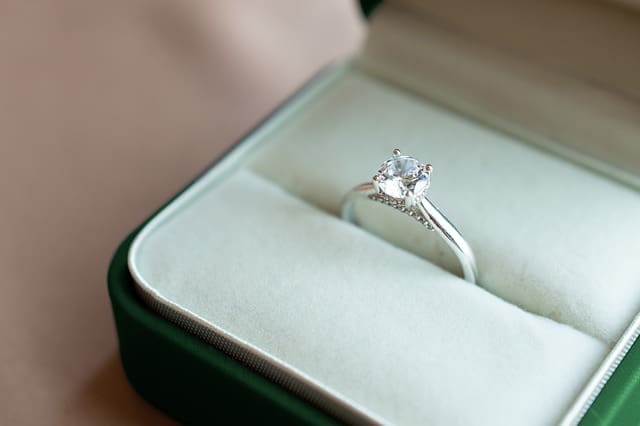Fine jewelry has captivated human beings for centuries, serving as a symbol of wealth, power, and beauty. Behind every exquisite piece lies the intricate art of fine jewelry making, where skilled craftsmen bring precious metals and dazzling gems to life. In this article, we will delve into the fascinating world of fine jewelry making, exploring the craftsmanship, materials, and techniques that create these stunning works of wearable art.
The Craftsmanship Behind Fine Jewelry Making
At the heart of fine jewelry making lies the craftsmanship that transforms raw materials into wearable masterpieces. Highly skilled artisans meticulously craft each piece, ensuring every detail is perfected. From designing and sketching to the final polishing, every step requires precision and expertise.
Design and Sketching:
The journey of fine jewelry-making begins with a spark of inspiration. Talented designers conceptualize unique and aesthetically pleasing designs, often taking inspiration from nature, historical eras, or personal narratives. Through sketches and renderings, they bring their ideas to life, carefully considering the interplay of shape, color, and texture.
Metalworking:
Once the design is finalized, the process of metalworking commences. Jewelers select precious metals such as gold, silver, platinum, or palladium, which are known for their durability and luster. These metals are then carefully melted and cast into the desired shape using traditional techniques or advanced machinery. Meticulous attention is paid to achieving the right proportions and dimensions, ensuring the piece is both visually appealing and comfortable to wear.
Stone Setting:
To elevate the beauty of fine jewelry, exquisite gemstones are carefully incorporated. Gemstones come in an array of colors, shapes, and sizes, each with its unique characteristics and value. Master stone setters employ their precision and dexterity to securely set these precious gems into the metal framework, using techniques such as prongs, bezels, or pave settings. This process requires immense skill to ensure the stones are aligned, symmetrical, and securely placed.
Engraving and Embellishment:
Engraving and embellishing add an extra layer of detail and personalization to fine jewelry. Intricate patterns, symbols, or text can be engraved onto the surface, creating a distinctive design element. Additionally, jewelers may enhance the piece with decorative techniques such as filigree work, inlaying, or granulation. These embellishments showcase the craftsmanship and artistry of the jeweler, making each piece truly one-of-a-kind.
The Materials Used in Fine Jewelry Making
To create exquisite jewelry, craftsmen utilize a range of materials carefully selected for their quality, beauty, and durability. The choice of metals and gemstones greatly impacts the final outcome of the piece.
Precious Metals:
Precious metals are the foundation of fine jewelry making. Gold is one of the most popular choices, valued for its beauty and rarity. It can be found in various colors, including yellow, white, and rose gold. Silver, with its elegant sheen, is another favored metal, often used for intricate detailing. Platinum and palladium, known for their durability and hypoallergenic properties, are highly prized for their use in fine jewelry.
Gemstones:
Gemstones add a vibrant and captivating element to fine jewelry. Diamonds, with their timeless beauty and exceptional hardness, are the most sought-after gemstones. Other precious gemstones, such as rubies, emeralds, and sapphires, are also highly valued for their intense hues and rarity. Semi-precious gemstones like amethyst, garnet, and turquoise offer a broader range of colors and affordability, allowing for diverse design possibilities.
Techniques and Innovations in Fine Jewelry Making
The art of fine jewelry making is constantly evolving, with craftsmen exploring new techniques and embracing innovative technologies to push the boundaries of creativity and craftsmanship.
Lost-Wax Casting:
Lost-wax casting is a traditional technique that has been used for centuries in jewelry making. It involves creating a wax model of the desired piece, which is then encased in a mold. The mold is heated, causing the wax to melt and leave behind a cavity. Molten metal is then poured into the cavity, taking the shape of the original wax model. Once the metal solidifies, the mold is broken, revealing the finished piece. This technique allows for intricate and delicate designs to be reproduced with remarkable precision.
Computer-Aided Design and 3D Printing:
With the advent of computer-aided design (CAD) and 3D printing technologies, jewelry designers can now bring their creations to life with unparalleled accuracy and efficiency. CAD software enables precise modeling and visualization of intricate designs, providing a digital blueprint for the piece. This digital file can then be used to create a physical prototype through 3D printing, allowing jewelers to assess the design and make adjustments before proceeding to production. This combination of technology and craftsmanship opens up endless possibilities for creativity and customization in fine jewelry making.
Laser Welding:
Laser welding has revolutionized the way jewelers work with metals, offering a precise and non-invasive method of joining metal components. This technique utilizes a focused laser beam to fuse metal parts together, resulting in clean and seamless joints. Laser welding is particularly useful when working with delicate or heat-sensitive materials, as it minimizes the risk of damage. It allows jewelers to create intricate designs with intricate metalwork while maintaining the integrity and strength of the piece.
Conclusion:
The art of fine jewelry-making combines the skills of talented craftsmen, the beauty of precious metals, and the allure of dazzling gemstones. From the initial design and sketching stage to the final polishing and embellishments, each step in the process requires meticulous attention to detail and a deep understanding of materials and techniques. With the constant evolution of technology, jewelers like Mark Broumand are now able to embrace innovative methods like CAD, 3D printing, and laser welding, pushing the boundaries of creativity and craftsmanship. The result is a stunning array of wearable art that continues to captivate and inspire us, showcasing the timeless beauty and artistry of fine jewelry.
Featured Image by Priscila Flores from Pixabay






